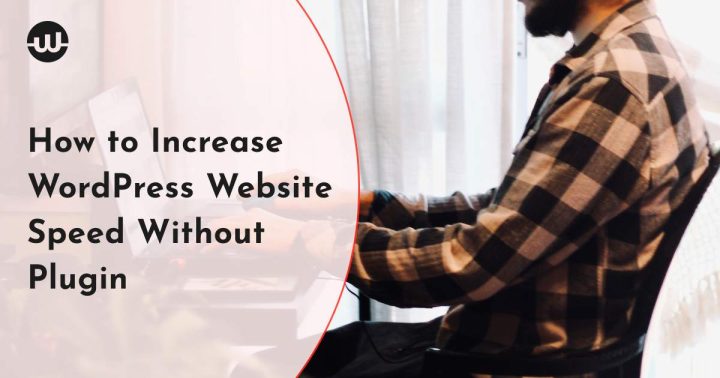In today’s fast-paced digital world, website speed plays a crucial role in user experience and search engine rankings. One popular platform for website development is WordPress, known for its flexibility and extensive plugin ecosystem. However, plugins can sometimes weigh down a website, causing sluggish performance. In this article, we will explore effective techniques to boost the speed of your WordPress website without relying on additional plugins.
Enhancing the speed of your WordPress website without relying on plugins requires the expertise of WordPress specialists who can optimize code, leverage browser caching, and implement efficient server configurations to achieve optimal performance.
1. Optimize Images
Images are often the primary culprits behind slow-loading websites. To enhance performance, optimize your images before uploading them to WordPress. Reduce image sizes by using compression tools like Adobe Photoshop, TinyPNG, or online services like Kraken.io. Additionally, leverage modern image formats like WebP, which provide higher compression without sacrificing quality.
2. Utilize Caching Mechanisms
WordPress generates dynamic content for each user request, consuming server resources and slowing down your site. Implementing caching mechanisms can significantly enhance website speed. One method is browser caching, which instructs the user’s browser to store static files locally, reducing subsequent page load times. You can achieve this by adding caching directives to your website’s .htaccess file.
3. Minify CSS and JavaScript
Combining and minifying your CSS and JavaScript files can significantly reduce the number of server requests, thereby accelerating your website. Minification involves removing unnecessary characters, whitespace, and comments from your code without altering its functionality. Numerous online tools, such as CSS Minifier and JS Compressor, simplify the process of minifying your website’s code.
4. Enable Gzip Compression
Gzip compression reduces the size of your website’s files before they are sent to the user’s browser, resulting in faster page load times. Most modern web servers support Gzip compression. You can enable it by adding a few lines of code to your website’s .htaccess file. This compression technique is particularly effective for text-based files like HTML, CSS, and JavaScript.
5. Optimize Database Queries
WordPress relies on a database to store and retrieve content. Ensuring efficient database queries is crucial for website speed. Regularly optimize your database tables by removing unnecessary data, such as spam comments, trashed posts, and unused plugins. Additionally, consider employing plugins like WP-Optimize, which automatically clean up and optimize your database for optimal performance.
6. Leverage Content Delivery Networks (CDNs)
Content Delivery Networks distribute your website’s static files across various servers worldwide, reducing the distance between your server and the user’s browser. By using a CDN, you can deliver content faster to your visitors, regardless of their geographic location. Popular CDNs include Cloudflare, MaxCDN, and Amazon CloudFront. Set up a CDN by modifying your website’s DNS settings and configuring the CDN provider’s settings accordingly.
7. Reduce HTTP Requests
Minimizing the number of HTTP requests required to load your website can significantly improve its speed. Combine multiple CSS files into one and do the same for JavaScript files. Additionally, consider using CSS sprites, which combine multiple images into a single file, reducing the number of image requests. Fewer HTTP requests result in faster page load times and an enhanced user experience.
While plugins offer convenient solutions for optimizing WordPress websites, reducing reliance on them can yield significant speed improvements. By implementing the techniques discussed in this article, you can increase your website’s speed without adding additional plugins. Remember to optimize images, leverage caching mechanisms, minify code, enable Gzip compression, optimize database queries, utilize CDNs, and reduce HTTP requests. By following these steps, your WordPress website will load faster, providing visitors with a seamless browsing experience and improving your search engine rankings.
